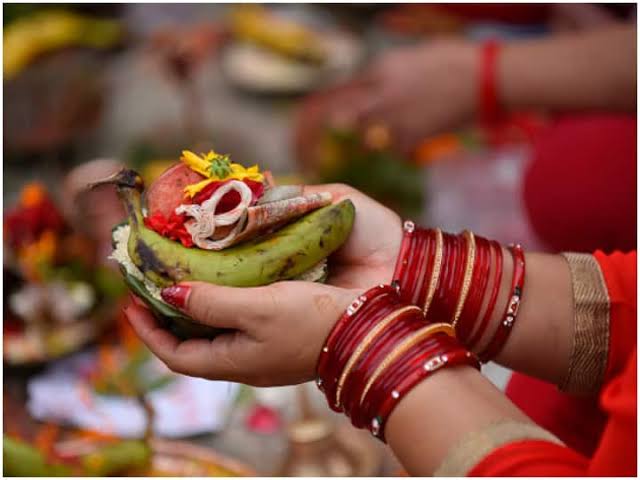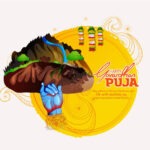Teej is one of the most vibrant and significant festivals celebrated by women in India and Nepal. It’s a day of fasting, prayers, and rituals that symbolizes devotion to marital bliss and the well-being of the family. In 2021, Teej was celebrated on August 11, and it marked a day of festivity, traditional rituals, and reflection for countless women across the subcontinent. Here’s a look at the essence of Teej, its significance, and how people celebrated the festival in 2021.
Contents
What is Teej Festival?
Teej is primarily a celebration of the bond between husband and wife. Women pray for the health, longevity, and prosperity of their husbands, while unmarried women pray for a good partner in the future. The festival is often associated with various stories from Hindu mythology, most notably the legend of Goddess Parvati and Lord Shiva.
According to the myth, Goddess Parvati observed a strict fast and performed intense penance to win Lord Shiva as her husband. Teej symbolizes the devotion and love between them. The festival also celebrates the arrival of the monsoon season, which is symbolic of fertility and renewal.
Different Types of Teej Celebrations
Teej is celebrated in different forms across various regions of India, with three major types:
- Hariyali Teej
- Celebrated in the month of Shravan, Hariyali Teej is marked by women’s fasting, singing, and dancing. It is observed with much enthusiasm in the northern and western regions of India, including Rajasthan, Haryana, and Uttar Pradesh. Women wear colorful attire, apply henna, and gather to celebrate the monsoon’s arrival.
- Kajari Teej
- Observed mainly in Uttar Pradesh and Bihar, Kajari Teej is celebrated during the month of Bhadrapad, which usually falls a month after Hariyali Teej. It involves fasting, prayers, and traditional songs, with women often observing the fast for the well-being of their husbands.
- Akha Teej
- This Teej is significant for newly married women. It’s believed to ensure a happy married life and is often celebrated with rituals focused on honoring marital bonds and prosperity.
Rituals and Celebrations on Teej
- Fasting (Vrat)
- One of the main aspects of Teej is fasting. Women observe either a Nirjala fast (without food or water) or a Phalahar fast (eating only fruits and milk). The fasting is believed to bring spiritual and physical benefits, along with blessings for marital happiness.
- Bhangra and Gidda
- Teej is not only about fasting and prayers but also about joy and celebration. Women gather in large groups, singing devotional songs and performing traditional dances like Gidda and Bhangra. This vibrant celebration brings communities together and creates an atmosphere of unity and love.
- Henna (Mehendi)
- Applying henna is a major ritual during Teej. Women adorn their hands with intricate henna designs, which are considered symbols of good fortune. The deeper the color of the henna, the more auspicious it is believed to be for the marriage.
- Offerings and Prayers
- Women visit temples dedicated to Lord Shiva and Goddess Parvati, offering prayers and seeking blessings. In some regions, a sacred idol or image of the goddess is placed in the home, where women offer flowers, sweets, and light lamps to seek divine blessings for marital happiness.
The Significance of Teej 2021 Date
While the customs and rituals of Teej are timeless, 2021 brought an additional layer of significance to the celebration. As the world was still grappling with the effects of the COVID-19 pandemic, many people celebrated Teej at home with close family members. Social distancing and health protocols impacted public gatherings, but that didn’t stop women from celebrating the festival in their own way, connecting with their roots, and finding joy in the simple rituals of the festival.
The return of monsoons during Teej was a symbolic moment for many who found solace in the lush greenery and the beauty of nature, reminding everyone that despite the difficulties, life continues to renew itself. The festival brought a sense of togetherness and hope, much-needed after the challenging times.
Teej and Modern Times
In today’s fast-paced world, the essence of Teej may have evolved, but the core values remain unchanged. Women, whether married or unmarried, still celebrate the day with devotion, prayer, and hope for happiness and love in their lives.
While some women continue to observe traditional fasts, others opt for more modern approaches, celebrating in a way that fits their lifestyle while still honoring the spirit of the festival. From small gatherings at home to virtual celebrations with family members, Teej continues to bring joy and positive energy to countless lives.
Conclusion: The Enduring Legacy of Teej 2021 Date
Teej is a festival that beautifully blends devotion, culture, and celebration. Whether it’s the vibrant dance performances, the fasting rituals, or the prayers for marital bliss, Teej holds a timeless significance in Hindu traditions. As we look back at Teej 2021, it serves as a reminder that no matter the challenges we face, traditions, family bonds, and prayers continue to guide us toward happiness and prosperity.
May the spirit of Teej continue to shine brightly, bringing love, joy, and blessings to all.



Today, I went to the beach front with my kids. I found a sea shell and gave it to my 4 year old daughter and said “You can hear the ocean if you put this to your ear.” She put the shell to her ear and screamed. There was a hermit crab inside and it pinched her ear. She never wants to go back! LoL I know this is entirely off topic but I had to tell someone!
Can you be more specific about the content of your article? After reading it, I still have some doubts. Hope you can help me.
Thanks for sharing. I read many of your blog posts, cool, your blog is very good.
hello there and thank you for your info – I’ve certainly picked up anything
new from right here. I did however expertise some technical issues using this website, as I experienced to reload the website many times previous to I
could get it to load properly. I had been wondering
if your web hosting is OK? Not that I am complaining, but slow loading instances times will very
frequently affect your placement in google and could damage your quality
score if advertising and marketing with Adwords. Anyway I’m adding
this RSS to my email and can look out for much more of your respective exciting content.
Ensure that you update this again very soon.
Here is my web page; nordvpn coupons inspiresensation
Hey there, I think your blog might be having browser compatibility issues.
When I look at your blog in Safari, it looks fine but when opening in Internet
Explorer, it has some overlapping. I just wanted to give you a quick heads
up! Other then that, awesome blog!
Have a look at my website; nordvpn coupons inspiresensation
Nordvpn coupon
350fairfax
I was wondering if you ever thought of changing the page layout of your website?
Its very well written; I love what youve got to say.
But maybe you could a little more in the way of content so people could connect with it better.
Youve got an awful lot of text for only having 1 or two images.
Maybe you could space it out better?
I?¦m no longer positive the place you are getting your information, however good topic. I must spend a while learning more or figuring out more. Thanks for excellent info I was searching for this info for my mission.
Greetings! Very helpful advice on this article! It is the little changes that make the biggest changes. Thanks a lot for sharing!
Great ?V I should definitely pronounce, impressed with your website. I had no trouble navigating through all tabs and related info ended up being truly simple to do to access. I recently found what I hoped for before you know it at all. Reasonably unusual. Is likely to appreciate it for those who add forums or something, site theme . a tones way for your client to communicate. Nice task..
great points altogether, you just gained a new reader. What would you recommend in regards to your post that you made some days ago? Any positive?
Spot on with this write-up, I truly assume this website needs way more consideration. I’ll in all probability be again to read rather more, thanks for that info.
Thanks for some other informative web site. Where else may I am getting that type of information written in such an ideal method? I have a undertaking that I’m simply now working on, and I have been at the look out for such info.
Some really wonderful info , Sword lily I observed this. “‘Beauty is truth, truth beauty,’ — that is allYe know on Earth, and all ye need to know.” by John Keats.
I’d constantly want to be update on new content on this site, saved to bookmarks! .
Wohh exactly what I was searching for, appreciate it for putting up.
Este site é realmente demais. Sempre que consigo acessar eu encontro coisas boas Você também vai querer acessar o nosso site e saber mais detalhes! conteúdo único. Venha descobrir mais agora! 🙂
Hi , I do believe this is an excellent blog. I stumbled upon it on Yahoo , i will come back once again. Money and freedom is the best way to change, may you be rich and help other people.
I was studying some of your content on this internet site and I conceive this internet site is really informative! Retain posting.
Wow that was strange. I just wrote an incredibly
long comment but after I clicked submit my comment didn’t
appear. Grrrr… well I’m not writing all that over again. Anyhow, just wanted
to say great blog!
Review my page; eharmony special coupon code 2025
I do not even know how I ended up here, but I assumed this publish used to be good. I don’t recognize who you might be however definitely you’re going to a famous blogger in the event you are not already 😉 Cheers!
NagaEmpire adalah sebuah situs slot online dengan minimal deposit 10k, situs resmi dan terpercaya di Indonesia ( NagaEmpire/Naga Empire is a online gambling platform with minimum deposit 10K IDR )
Please let me know if you’re looking for a author for your site. You have some really great posts and I believe I would be a good asset. If you ever want to take some of the load off, I’d absolutely love to write some content for your blog in exchange for a link back to mine. Please blast me an e-mail if interested. Thanks!
I’m Luke Sutton, a web design and creative media specialist based in Gloucester, and I work with businesses and individuals across the UK. I don’t just provide a service; I become a trusted creative partner, offering photography, video, and web design tailored to deliver results.